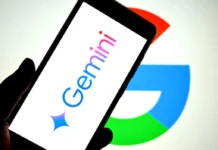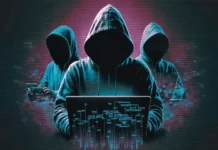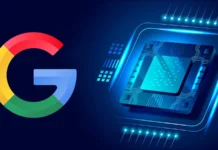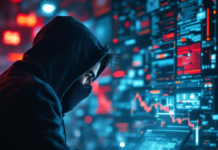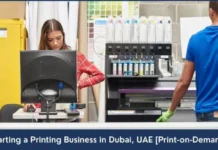Deepfake technology has been around for several years, and while it can be used for good purposes such as entertainment and education, it can also be used to spread false information and manipulate public opinion. In recent years, several deepfake videos have gone viral, causing concern and alarm among the public. In this article, we will discuss some of the most famous deepfake videos and their impact.
Tom Cruise Deepfake Video
One of the most famous deepfake videos that went viral was a video of Tom Cruise that appeared to show him performing magic tricks and telling jokes. The video, which was created by a TikTok user, was so convincing that many people believed it to be real. However, it was later revealed that the video was a deepfake and had been created using AI technology.
While the video was created for entertainment purposes, it sparked concerns about the potential misuse of deepfake technology. Experts have warned that deepfakes could be used to spread false information or manipulate public opinion, and the Tom Cruise video highlighted just how convincing deepfakes can be.
Barack Obama Deepfake Video
Another famous deepfake video that went viral was a video of former President Barack Obama. The video, which was created by a tech startup, appeared to show Obama delivering a speech about the dangers of deepfakes. However, the video was not real, and Obama never gave the speech.
The video was created to raise awareness about the potential misuse of deepfake technology and the dangers of fake news. It also demonstrated the power of deepfake technology and how it can be used to manipulate public opinion.
Nancy Pelosi Deepfake Video
In 2019, a video of Nancy Pelosi, the Speaker of the United States House of Representatives, went viral. The video, which was slowed down to make Pelosi appear drunk or unwell, was shared widely on social media and sparked controversy.
The video was not a deepfake, but it highlighted the dangers of misinformation and how easily false information can be spread on social media. The incident also raised concerns about the potential misuse of deepfake technology and the need for increased awareness and education.
Mark Zuckerberg Deepfake Video
In 2019, a deepfake video of Facebook CEO Mark Zuckerberg was shared on Instagram. The video appeared to show Zuckerberg giving a sinister speech about Facebook’s power and influence. The video was created by an artist as a form of political commentary, but it sparked concerns about the potential misuse of deepfake technology and the spread of misinformation.
Kim Jong Un Deepfake Video
In 2020, a deepfake video of North Korean leader Kim Jong Un was shared on social media. The video appeared to show Kim Jong Un dancing and performing various stunts, but it was later revealed to be a deepfake. The video was created by a Chinese video production company as a form of satire, but it sparked concerns about the potential misuse of deepfake technology and the spread of false information.
Joe Rogan Deepfake Video
In 2021, a deepfake video of comedian Joe Rogan was shared on TikTok. The video appeared to show Rogan endorsing a cryptocurrency scam, but it was later revealed to be a deepfake. The video was created by a group of hackers as a form of social engineering, but it highlighted the dangers of deepfake technology and the need for increased awareness and education.
While some of these deepfake videos were created for harmless entertainment purposes, others were created with malicious intent, and they highlight the potential dangers of deepfake technology. As deepfake technology becomes more advanced and accessible, it is essential to be aware of its potential impact and to work towards promoting responsible use of this technology.
In conclusion, deepfake technology is a powerful tool that can be used for entertainment, education, and even political commentary. However, it also poses a significant threat to society if misused. The above examples demonstrate the potential impact of deepfake videos and highlight the need for increased awareness and education about deepfakes. By understanding the dangers of deepfakes and promoting responsible use of this technology, we can work towards preventing its misuse and promoting a more informed and responsible society.
FAQs :
- What is a deepfake video?
A deepfake video is a type of video that has been manipulated using artificial intelligence (AI) and machine learning algorithms. Deepfake technology can be used to alter the appearance or voice of a person in a video, making it difficult to distinguish between what is real and what is fake.
- How are deepfake videos created?
Deepfake videos are created using specialized software that uses AI algorithms to analyze and manipulate video and audio data. The software can be trained on a large dataset of images and videos to create a digital model of a person’s face or voice, which can then be used to create a deepfake video.
- What are the dangers of deepfake videos?
Deepfake videos can be used to spread false information or to manipulate public opinion. They can also be used to harass or intimidate individuals, particularly women or minorities who may be targeted for their race, gender, or sexual orientation.
- Are there any regulations or laws around deepfake videos?
There are currently few regulations or laws specifically around deepfake videos. However, some countries have introduced laws around the use of AI and machine learning algorithms, which could potentially be used to regulate the use of deepfake technology.
- How can I protect myself from deepfake videos?
It can be difficult to protect yourself from deepfake videos, as they can be very convincing and difficult to distinguish from real videos. However, it is important to be aware of the potential dangers of deepfake videos and to approach all online content with a critical eye. Additionally, it is important to verify the source of any videos or information before sharing them online.


